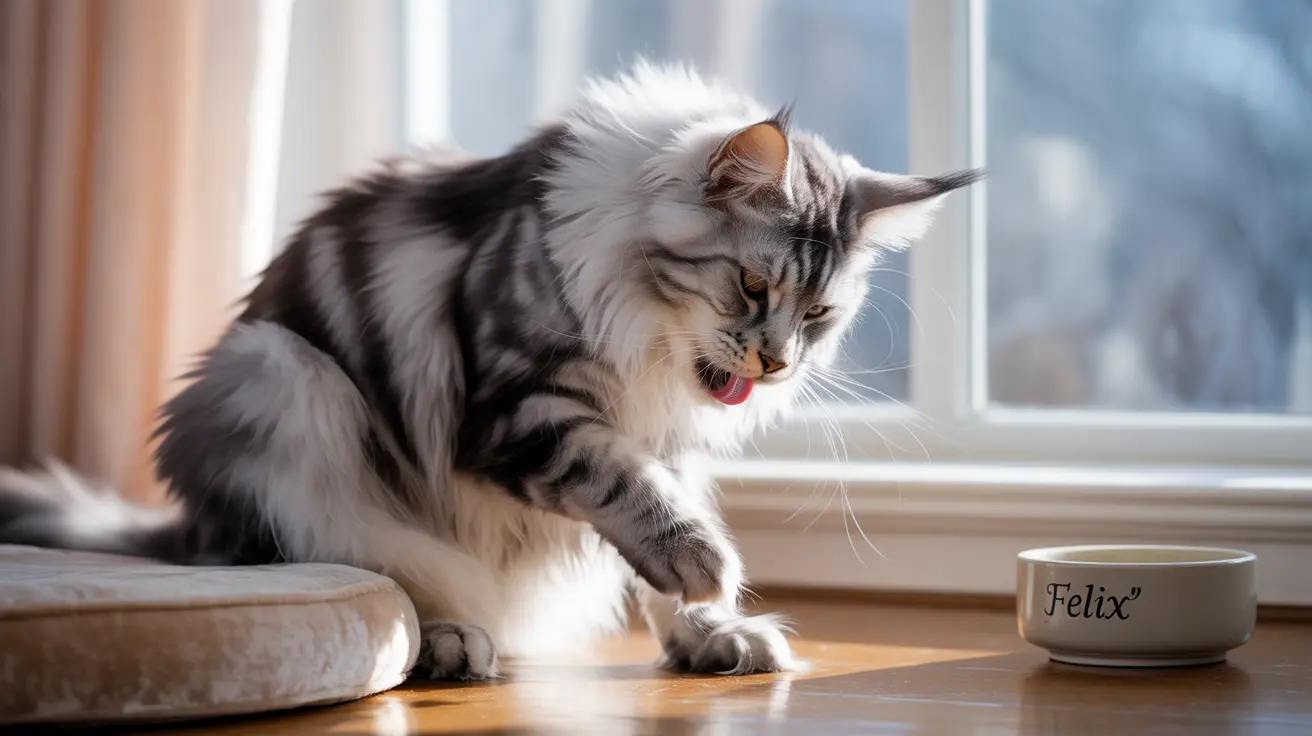The Science Behind Cat Grooming Frequency
Most cats spend between 30% and 50% of their waking hours engaged in grooming activities. This translates to several hours each day, with the average cat performing multiple grooming sessions lasting approximately 5 minutes each. This dedication to cleanliness isn't just vanity—it's a deeply ingrained survival mechanism.
During these grooming sessions, cats use their barbed tongues to remove dirt, distribute natural oils, and maintain optimal coat condition. The process also helps regulate body temperature and serves as a vital self-soothing behavior.
Daily Grooming Patterns and Timing
Cats typically follow predictable grooming patterns throughout the day. Most cats will groom:
- After meals
- Upon waking from naps
- Following litter box use
- Before settling down to sleep
- During periods of relaxation
This routine can vary based on individual personalities and environmental factors, but most healthy cats maintain consistent grooming schedules.
Factors Influencing Grooming Frequency
Age and Health Status
Young, healthy adult cats generally maintain the most rigorous grooming schedules. Senior cats might groom less frequently due to reduced flexibility or energy levels, while kittens learn grooming habits gradually from their mothers.
Breed and Coat Type
Long-haired breeds like Persians typically spend more time grooming than short-haired cats, though they often need additional human assistance to prevent matting. Some breeds, particularly hairless cats like the Sphynx, require different grooming approaches entirely.
Environmental Factors
Indoor cats might groom less frequently than outdoor cats, who need to remove more dirt and debris from their coats. Climate also plays a role—cats often groom more during warmer months to help cool themselves through evaporative cooling.
Signs of Healthy vs. Problematic Grooming
Normal Grooming Patterns
Healthy cats maintain a balanced grooming routine that results in:
- A clean, glossy coat
- No matted fur or tangles
- Regular grooming sessions throughout the day
- Calm, purposeful cleaning behaviors
Warning Signs
Watch for these potential red flags:
- Excessive grooming leading to bald patches
- Neglected grooming resulting in a matted or dirty coat
- Sudden changes in grooming frequency
- Focused grooming on specific areas
Supporting Your Cat's Grooming Habits
While cats are excellent self-groomers, they can benefit from human assistance. Regular brushing helps prevent hairballs, reduces shedding, and strengthens the bond between cat and owner. For long-haired cats, daily brushing is essential to prevent painful matting.
Frequently Asked Questions
How often do cats typically groom themselves each day and for how long per session?
Cats typically groom themselves 2-3 hours daily, spread across multiple sessions lasting about 5 minutes each. This accounts for roughly 30-50% of their waking hours.
What are the signs that my cat is over-grooming or under-grooming?
Over-grooming signs include bald patches, skin irritation, and excessive time spent grooming. Under-grooming signs include a matted, dull coat, visible dirt, and unusual odors.
How do factors like age, breed, and health affect a cat's grooming frequency?
Young, healthy cats groom most frequently, while senior cats may groom less due to mobility issues. Long-haired breeds require more grooming time, and health conditions can significantly impact grooming habits.
When should I start brushing my cat regularly, and how often should I groom different coat types?
Start brushing kittens early to establish good habits. Short-haired cats need weekly brushing, while long-haired cats require daily attention to prevent matting.
Can changes in my cat's grooming habits indicate health problems or stress?
Yes, sudden changes in grooming frequency or style can signal health issues or stress. If you notice significant changes, consult your veterinarian.
Understanding your cat's grooming patterns helps ensure their health and happiness. By monitoring these natural behaviors and providing appropriate support, you can help your feline friend maintain optimal hygiene and well-being.






